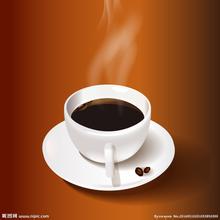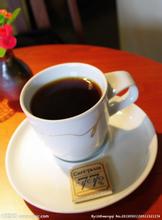Brief introduction of taste grinding scale for coffee bean flavor growing environment in Xipi Waterfall, Uganda
Brief introduction of taste grinding scale for coffee bean flavor growing environment in Xipi Waterfall, Uganda
In 1931, it was exported to Kenya in obscurity from Geisha Mountain Mountain in southwestern Ethiopia, wandered to Tanzania and Costa Rica, was transplanted to Panama in the 1960s, and then went through nearly half a century before it became a blockbuster, beating the victorious armies of Bourbon, Kaddura, Kaduai and Tibika to win the first prize of the Panamanian National Treasure Bean Cup Test Competition in 2005, 2006 and 2007. In 2007, the international famous bean cup test sponsored by the American Fine Coffee Association (SCAA) won the championship again, and the bidding price was sold at US $130 per pound, setting a record for the highest price in the history of competition beans.
Ugandan coffee beans have a unique flavor of delicate taste, which is very suitable for making Italian and other flavors of coffee. More importantly, Ugandan coffee beans are strictly screened according to the standards of the international market to ensure their high quality and pollution-free characteristics.
Uganda leads Africa in coffee production, accounting for more than 70% of its total exports. In the 1960s, Ugandan coffee production remained at 3.5 million bags a year. By the mid-1980s, coffee production had dropped to 2.5 million bags a year, mainly for political reasons. But now coffee production is on the rise again, currently about 3 million bags a year. It is mainly exported to the European Union, with Germany, Italy and other countries as the largest coffee buyers.
Mbale on the eastern side of the Elgang Mountains and other producing areas on the western side near the border of the Democratic Republic of the Congo have the export name Wugar. The official ranks are Oaganic (Organic), Bugisu AA, Bugisu A, Bugisu B, Bugisu PB, Wugar, Drugar and other unlisted grades. To find a good Ugandan coffee, you must first recognize the BugisuAA, An and PB grades, but because the country is inland, there are many transport problems.

Important Notice :
前街咖啡 FrontStreet Coffee has moved to new addredd:
FrontStreet Coffee Address: 315,Donghua East Road,GuangZhou
Tel:020 38364473
- Prev

Price characteristics and Flavor description of Blue Mountain Coffee Manor in Jamaica
Although Blue Mountain Coffee was once very famous, it has not been included in Uncle Bean's baking list for a long time, mainly because of the stability of raw bean sources. But it was only after 2011, when we carried out a series of deep technical cooperation with the Jamaican Coffee Industry Authority (CIB), that Uncle Doushu began to operate Blue Mountain Coffee. Uncle Dou would like to use his roaster to interpret these from the Caribbean.
- Next

Brief introduction of several grinding degrees of Starbucks coffee beans
Brief introduction of several grinding degrees of Starbucks coffee beans 1. Buy a fully automatic coffee maker and fresh espresso beans (order-baked or Rabasa illy beans on Taobao) 2. Buy coffee capsule machine and the corresponding capsule machine, the former thousands to tens of thousands; the latter more than a thousand coffee capsules are generally more expensive than fresh coffee beans, fresh coffee beans can be made by about 100 pounds
Related
- Detailed explanation of Jadeite planting Land in Panamanian Jadeite Manor introduction to the grading system of Jadeite competitive bidding, Red bid, Green bid and Rose Summer
- Story of Coffee planting in Brenka region of Costa Rica Stonehenge Manor anaerobic heavy honey treatment of flavor mouth
- What's on the barrel of Blue Mountain Coffee beans?
- Can American coffee also pull flowers? How to use hot American style to pull out a good-looking pattern?
- Can you make a cold extract with coffee beans? What is the right proportion for cold-extracted coffee formula?
- Indonesian PWN Gold Mandrine Coffee Origin Features Flavor How to Chong? Mandolin coffee is American.
- A brief introduction to the flavor characteristics of Brazilian yellow bourbon coffee beans
- What is the effect of different water quality on the flavor of cold-extracted coffee? What kind of water is best for brewing coffee?
- Why do you think of Rose Summer whenever you mention Panamanian coffee?
- Introduction to the characteristics of authentic blue mountain coffee bean producing areas? What is the CIB Coffee Authority in Jamaica?

